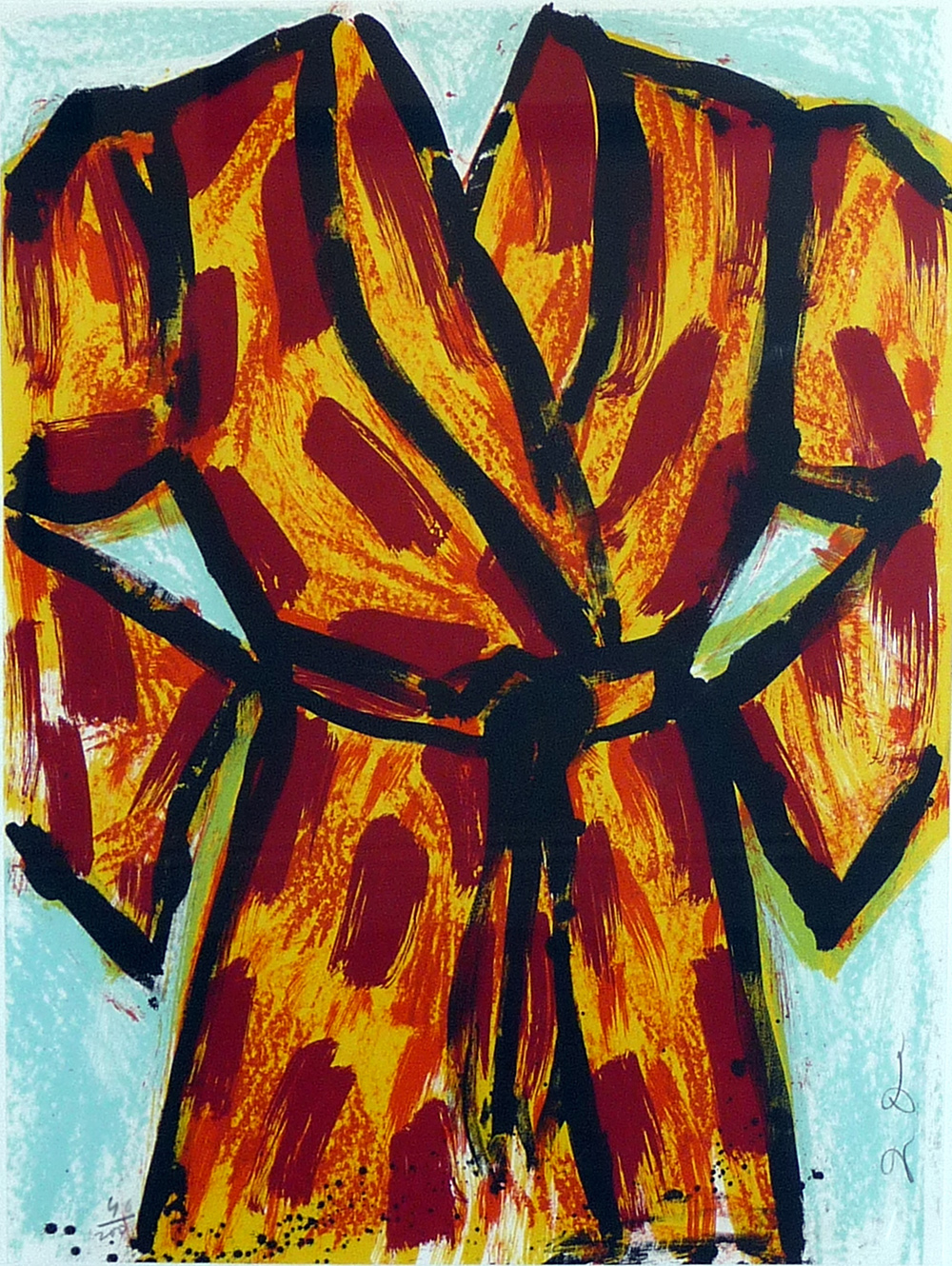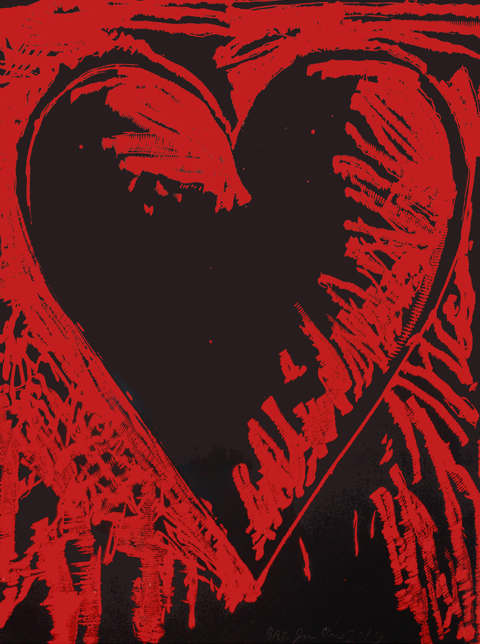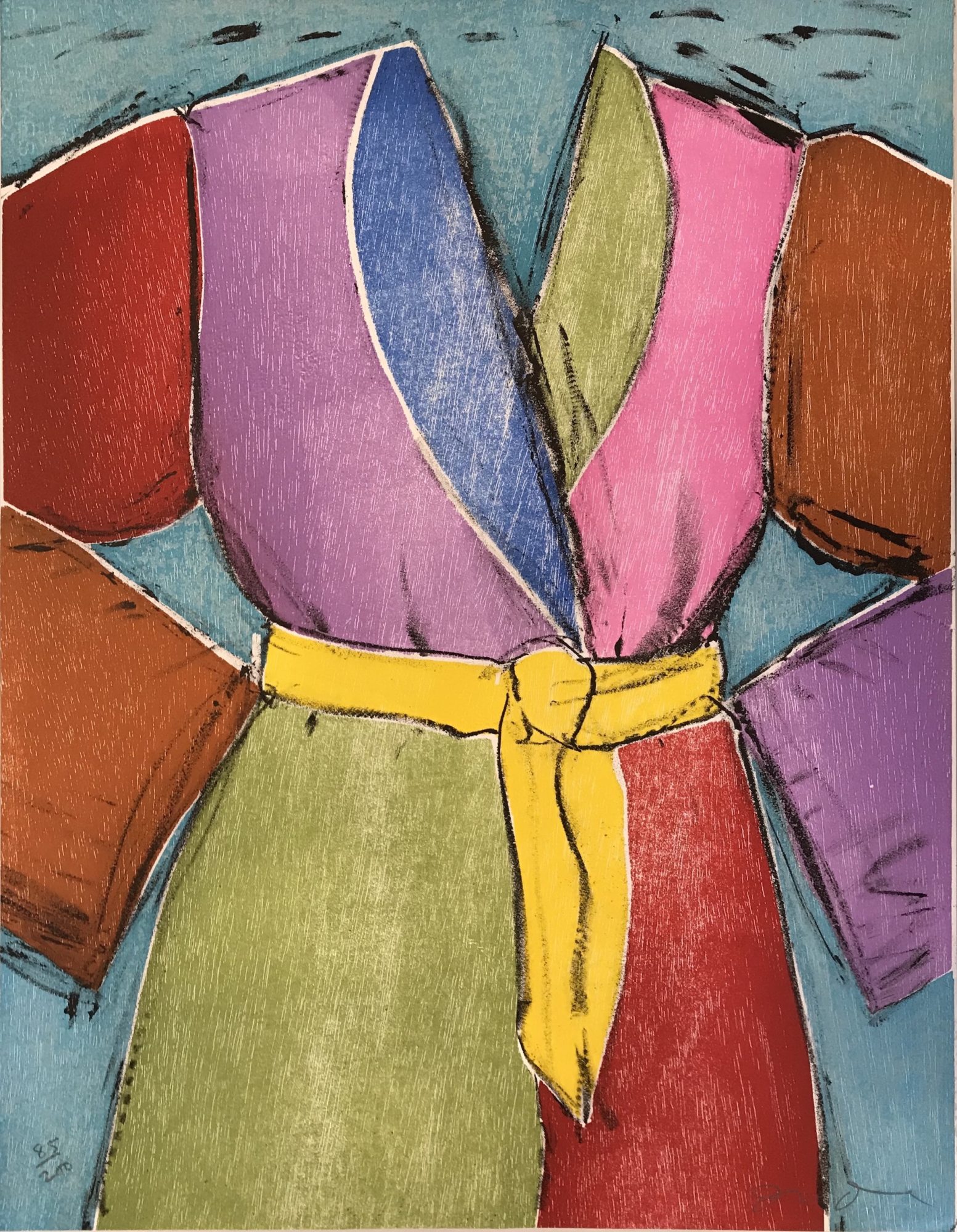Jim Dine was born June 16, 1935, in Cincinnati, Ohio. At the age of 12, his mother died and Dine went to live with his maternal grandparents. Dine’s grandfather owned a hardware store where Jim Dine worked throughout his youth and came to know and appreciate the beauty of hand tools. It is not surprising that Jim Dine would turn to them as a theme later on. Jim Dine states that he adopted tools as a subject “because they felt right….like relatives…as though their last name was Dine.”
Jim Dine took evening art courses at the Cincinnati Art Academy during his senior year of high school and in 1957 Jim Dine received his Bachelor of Fine Art from the University of Cincinnati.
In 1958 Jim Dine moved to New York City where Dine would become a pioneer creator along with artists Allan Kaprow, Claes Oldenburg, and Robert Whitman, of chaotic performance art known as ‘Happenings.’ In 1958 Jim Dine exhibited at the Judson Gallery, New York, and in 1960 Dine had his first solo art show which took place at the Reuben Gallery, New York.
While in New York City, Jim Dine met and became associated with American Pop Artists including Robert Rauschenberg and Roy Lichtenstein. Jim Dine is closely linked with the development of Pop Art in the early 1960s. Jim Dine’s earliest artworks were mostly assemblages in which Dine attached actual objects such as tools, rope, shoes, neckties, and other articles of clothing, and even a bathroom sink, to his paintings. Characteristically, these objects were Dine’s personal possessions, and this autobiographical content differentiated Jim Dine’s Art from the coldness and impersonal nature of pop art. Jim Dine’s art fused personal passions and everyday experiences. Jim Dine’s repeated use of familiar and personally significant objects, such as a bathrobe, hands, tools, and hearts, is a signature of his art.
Jim Dine’s reputation soared in the early sixties. Between 1960 and 1965 Jim Dine had various guest professorships, among others at Yale University, New Haven, and Oberlin College, Ohio. In 1964 Jim Dine was represented at the Venice Biennale, the same year Dine first used the image of a man’s bathrobe, to create a self-portrait. Jim Dine has repeated the theme of himself as an unseen figure in a bathrobe ever since. In 1976 Jim Dine produced a series of large-scale paintings and original prints of “invisible men” in monumental bathrobes. The Bathrobes reflect Jim Dine’s new attention to drawing and painterly techniques to achieve a quieter, more romantic and sensual effect.
In 1967 Jim Dine and his family moved to London, England, where he devoted his energies to making prints and drawings. Although engaged principally in making paintings and mixed-media assemblages in the first half of the 1960’s, Jim Dine never stopped drawing. As Jim Dine revised his artistic ambitions throughout the 1970’s, Dine turned to drawing almost exclusively. Jim Dine has also made a number of three-dimensional artworks and environments, and Dine is well-known for his drawings and graphic prints. Thirty years later, drawings and prints remain at the core of Jim Dine’s range of expression.
In 1970, the Whitney Museum of American Art, New York, organized a major retrospective of Jim Dine’s art, and in 1978 the Museum of Modern Art, New York, presented a retrospective of Jim Dine’s Prints.
Jim Dine’s attention turned to sculptural art in the early 1980s when Dine created sculptures based on the sculpture Venus de Milo as well as a number of large-scale Heart Sculptures.
In over four decades, Jim Dine has adopted an impressive range of media–painting, performance, drawing, prints, book design, sculpture, photography, and more. Jim Dine has written and illustrated several books of poetry. Jim Dine is among America’s greatest living draftsmen, and Dine’s images of tools, large-scale nudes, bathrobes, hearts and studies from nature and after antiquity are among the most beautiful and accomplished drawings, prints, and sculptures of our time. Jim Dine’s art has been the subject of numerous individual and group art exhibitions and is in the permanent collections of museums around the world. Jim Dine lives in New York and Vermont.
“I have come to terms with a lot of things, because, when all’s said and done, there’s really very little one can do about a lot of things. You just accept them. The point is you just have to keep on working and you just have to keep on living.” – Jim Dine
Select Museum Collections:
Guggenheim Museum, New York
Metropolitan Museum, New York
The British Museum, London
Hirshhorn Museum, Washington, DC
Smithsonian Institution, Washington, DC
National Gallery of Art, Washington, DC
Art Institute of Chicago, Chicago
Whitney Museum of American Art, New York
Minneapolis Institute of Arts, MN
MOCA, Los Angeles
LACMA, Los Angeles
Tate Gallery, London




